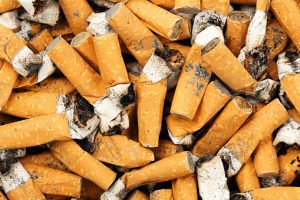
This number is expected to increase, with more than one billion deaths expected this century alone.
Our view on tobacco has changed drastically over the last few decades. It was initially promoted as a remedy for a sore throat, but now cigarettes are vilified, having been banned in public buildings in states across the nation.
Severe cancer risk
Tobacco smoke increases the risk of heart disease and stroke two to four times. It increases the risk of lung disease in men by 25 times, and 25.7 times in women. Smoking can cause cancer almost anywhere in the body, including the:
- Bladder
- Blood (leukemia)
- Cervix
- Colon and rectum
- Esophagus
- Kidney and urinary structures
- Larynx
- Liver
- Oropharynx (includes parts of the throat, tongue, soft palate, and the tonsils)
- Pancreas
- Stomach
- Respiratory structures: Trachea, bronchus, and lung
“By 2030, more than 80 percent of the deaths will occur in developing countries, which have been increasingly targeted by tobacco companies seeking new markets to circumvent tightening regulation in developed nations,” said WHO chief Margaret Chan.
Our planet is being destroyed
The World Health Organization believes that the production of tobacco itself is damaging and polluting our environment. Tobacco farming has led to deforestation and requires large quantities of fertilizer and pesticides. This has a significant impact on the land and wildlife. They also estimate that one tree is needed for every 300 cigarettes made.
The tobacco industry is estimated to emit nearly four million tons of carbon dioxide equivalent annually. This is the same as about three million transatlantic flights.
Not to mention when cigarettes fall into the hands of their customers, exposing themselves to known cancer-causing and toxic substances. Smoking also releases greenhouse gases that travel up into the atmosphere. The discarding of cigarette butts has also proved problematic as they collectively make up the largest number of individual pieces of litter in the world, accounting for nearly 40 percent of all items collected in coastal and urban clean ups.